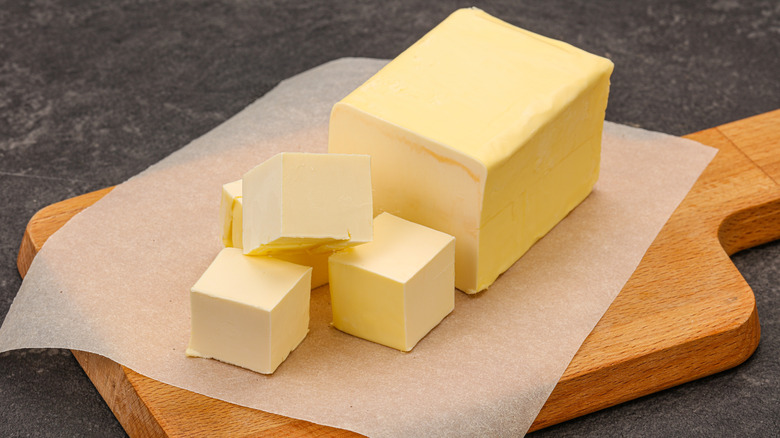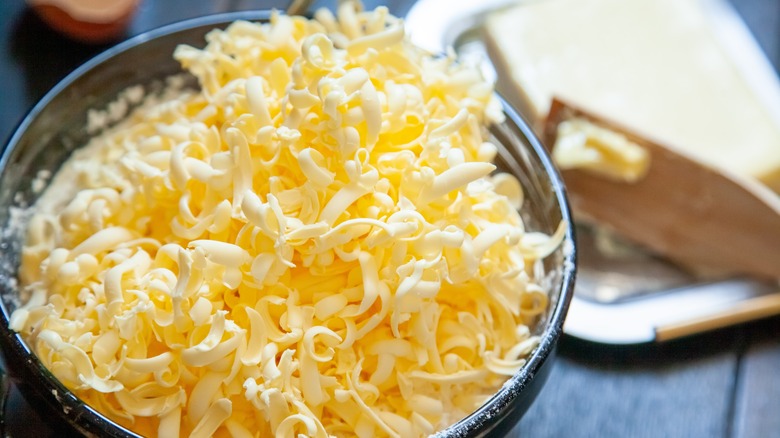The Clever Butter Hack You Need To Try For Flakier Baked Goods
Baking is all about the butter. The right butter brand, fat content, texture, temperature, and whether it contains salt or not, all significantly contribute to the quality of your final product. Flaky pie crusts and layered pastries like croissants call for butter straight from the freezer. Biscuit recipes almost universally demand chilled butter. Why? The cold butter flakes you work into your dough create air pockets when exposed to high heat, creating a laminated baked good. Cold butter also helps make some doughs easier to handle while shaping. Still, mixing solid, cold sticks of butter into your flour can be a challenge.
While softening butter is a practice in patience, working with cold butter requires careful control. If a recipe requires cold butter, it's important not to overwork the dough, which will heat the butter and cause it to melt. Most traditional methods of cutting in cold butter, like snapping it in with your fingers, can be hard to accomplish without raising the temperature. Luckily, your favorite cheese accessory is the perfect tool for incorporating cold butter into a flour mixture.
To create small flecks of chilled butter that will maintain their structure through baking, use your cheese grater. Grating your cold butter alleviates the pesky heat concern, creating perfectly sized shards without too much handling.
Grate your butter for great bakes
The metal box grater you use for topping your pasta with Parmesan is actually a convenient multi-purpose tool. You can use the gadget to grate root vegetables, shred cauliflower, break up hard-boiled eggs for egg salad, and mince cucumbers for dip. More importantly, your trusty cheese grater is also great for getting cold butter ready for folding into dough.
For extra flakey pastries, put a stick or two of butter in the freezer for at least 30 minutes. Then, when you're ready to prepare perfectly puffed pastries, use your box grater to create tiny butter shards. This process is comparable to the fraisage technique, in which the baker uses the heel of their hand to smear butter into thin disks within the dough. Remember to work quickly when grating the butter, as long pauses will cause the butter to warm up. For a boost of cold, consider placing your grated butter in the freezer while you prep for the rest of the recipe. Once grated, these tiny butter bits are easy to evenly mix throughout your dough and will keep it nice and cool until its ready to be baked.

